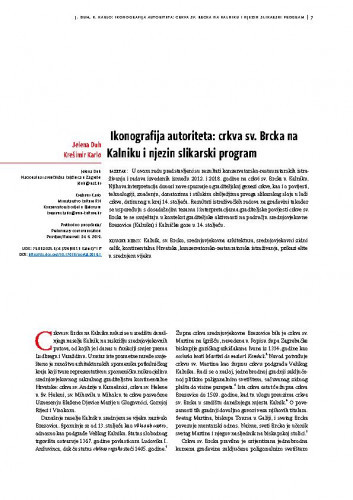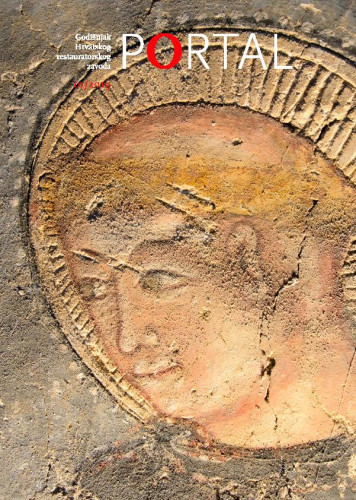U ovom radu predstavljeni su rezultati konzervatorsko-restauratorskih istraživanja i radova izvedenih između 2012. i 2018. godine na crkvi sv. Brcka u Kalniku. Njihova interpretacija donosi nove spoznaje o graditeljskoj genezi crkve, kao i o povijesti, tehnologiji, značenju, donatorima i stilskim obilježjima prvoga slikarskog sloja u lađi crkve, datiranog u kraj 14. stoljeća. Rezultati istraživačkih radova na građevini također se uspoređuju s dosadašnjim tezama i interpretacijama graditeljske povijesti crkve sv. Brcka te se smještaju u kontekst graditeljske aktivnosti na području srednjovjekovne Brezovice (Kalnika) i Kalničke gore u 14. stoljeću.; In the context of medieval architecture in continental Croatia, the church of St. Brice in Kalnik is a unique monument, primarily because of the correlation between the wall paintings in the nave and the sanctuary. Over the last six centuries, the church has undergone many changes and extensions. Traces of the structure’s complex architectural history are almost non-existent in written sources, and its reconstruction relies solely on the research and valorisation of both the architectural corpus and the phases of wall paintings in the sanctuary and nave. Centuries of gathering and furthering the knowledge about this unique building, from the first description of the church, in a text by Ivan Kukuljević Sakcinski in 1859, to the latest conservation and restoration, carried out by the Croatian Conservation Institute since 2012, have tried to answer questions about the history and construction of the church, its construction phases, workshops and patrons. The turning point for valorisation was in 1952, when Ana Deanović discovered two series of medieval wall paintings in the church, beneath the damaged 19thcentury wall paintings. The two series of wall paintings have different stylistic, artistic and technological ranges, and are dated to the late 14th and early 16th centuries. New insights from conservation, restoration and archaeological research (2012–2018) require recontextualisation and revalorisation of the existing theories and insights about the church, its function, the purpose of the belfry/tower, and the oldest wall paintings in the nave, as well as their iconography and painting technique. The discovery of damaged wall paintings on the south wall of the nave in 2012, portraying the family of the patron with a Franciscan saint, is analogous to the paintings discovered in 1952.
Sažetak

 Portal : godišnjak Hrvatskog restauratorskog zavoda : 10(2019) / glavna urednica Ksenija Škarić.
Portal : godišnjak Hrvatskog restauratorskog zavoda : 10(2019) / glavna urednica Ksenija Škarić.